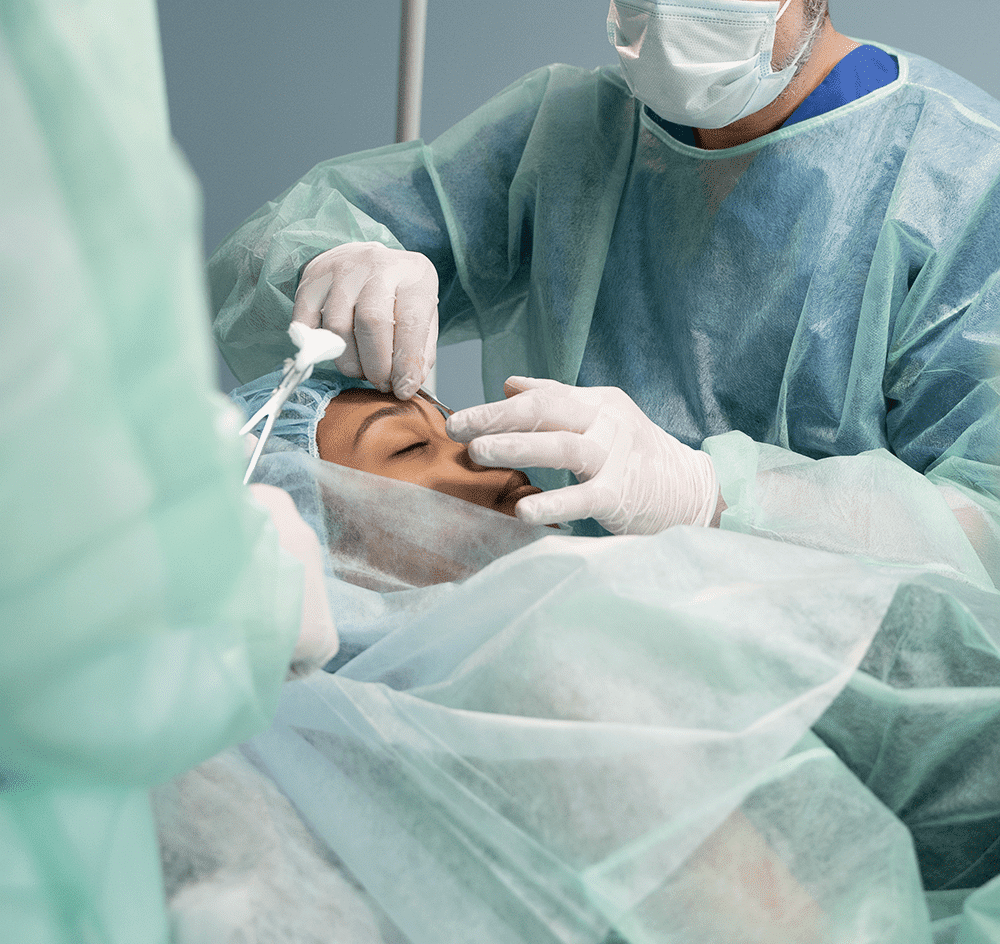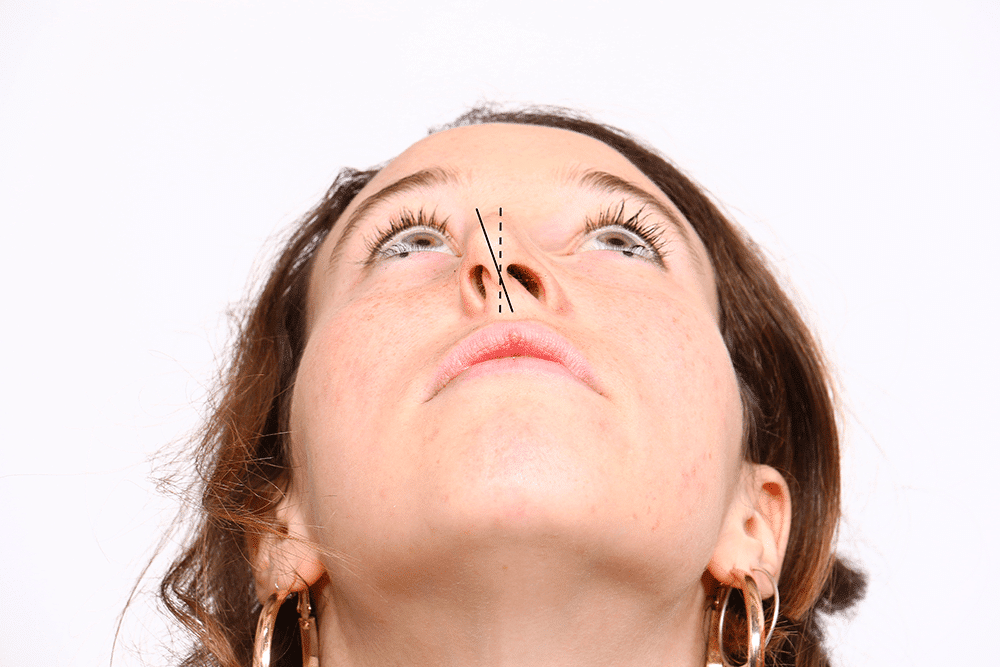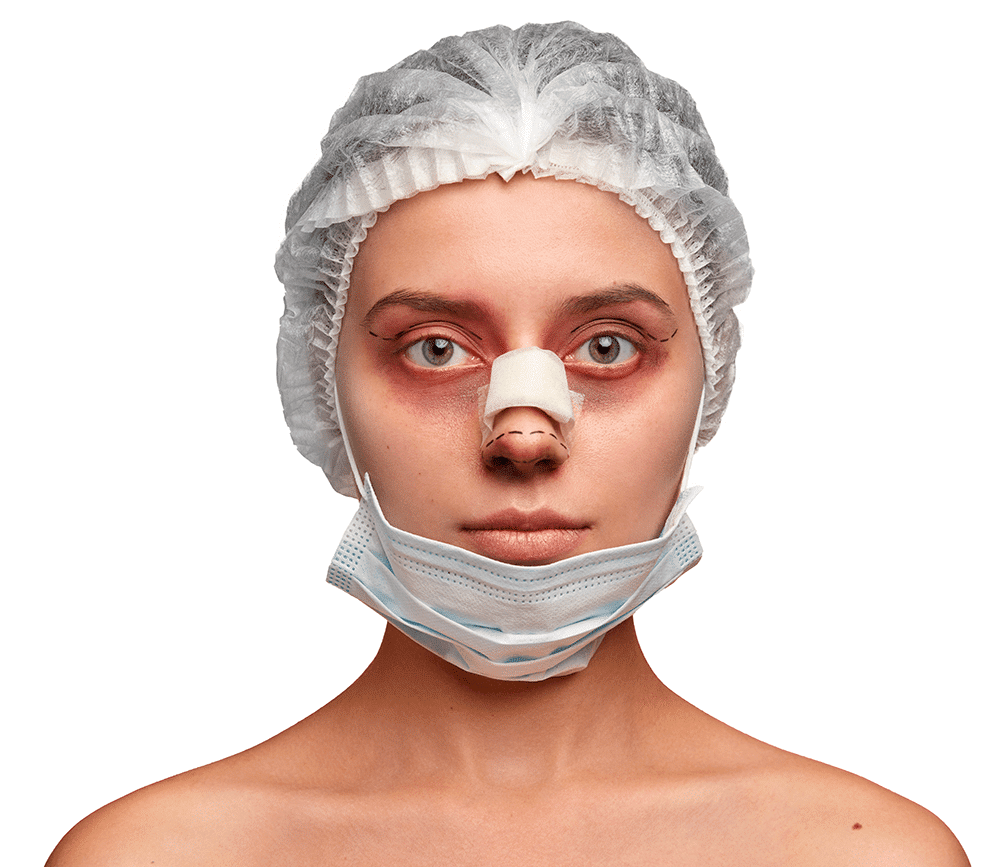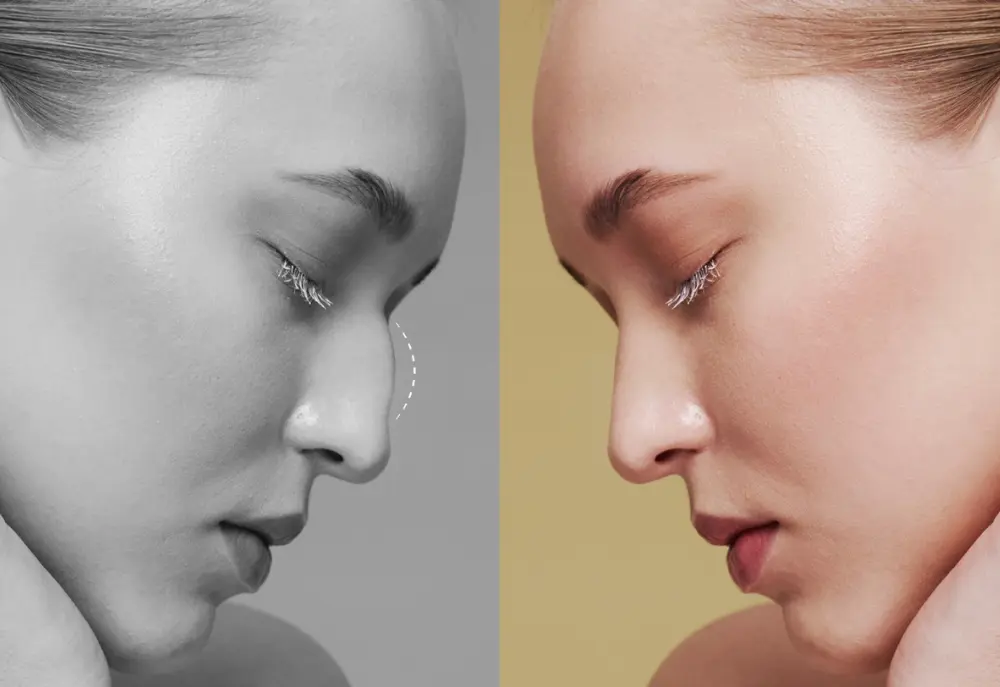- Types of Rhinoplasty: An Overview
- Types of Rhinoplasty
- Open Rhinoplasty
- Closed Rhinoplasty
- Ethnic Rhinoplasty
- Tip Plasty
- Septorhinoplasty
- Filler (Nonsurgical) Rhinoplasty
- Ultrasonic Rhinoplasty
- Radiofrequency Laser Rhinoplasty
- Functional Rhinoplasty
- Revision Rhinoplasty
- Techniques of Rhinoplasty
- Reduction Rhinoplasty
- Reconstructive Rhinoplasty
- Augmentation Rhinoplasty
- Refinement Rhinoplasty
- The Procedure of Rhinoplasty
- Anesthesia
- Make the Incisions
- Reshape the Nose
- Recovery After Rhinoplasty
- Risks of Rhinoplasty
- The Bottom Line
If you e looking to enhance your facial appearance, rhinoplasty can be a great option to consider. However, there are different types of rhinoplasty available for both men and women, and some are more beneficial than others.
Generally speaking, not only rhinoplasty in Turkey can improve the size or shape of your nose, but it can also help to create a more balanced and attractive overall look. In fact, the surgery can enhance your facial features and create a beautiful and well-proportioned appearance for the whole face.
Whether you e seeking a more attractive face or simply want to improve the appearance of your nose, rhinoplasty can be a great solution. With the help of a skilled and experienced surgeon, you can achieve the results you desire and feel more confident and comfortable in your own skin.
Discover our sources:
- Rhinoplasty in Turkey: Cost, Best Surgeons & Complete Guide (2024)
- Top-Rated Rhinoplasty Surgeons in Turkey | Same-Week Consultations
- How Much Is a Nose Job? Real Costs + 5 Ways to Save (2024 Prices)
- Male Rhinoplasty Results : Before & After Photos (2024 Gallery)
Types of Rhinoplasty: An Overview
Nose jobs, or rhinoplasty procedures, are not all created equal. Some types are superior to others and more desirable, just like any other plastic surgery in Turkey. After all, every patient has unique needs and expectations when seeking a nose job, which means that surgeons must plan each treatment and procedure specifically for each patient.
Categorization of rhinoplasty types isn’t an easy task, and there so universally accepted criteria for this purpose. In other words, there are no definitive or universal criteria to categorize rhinoplasty due to its diverse goals and surgical details.
However, many surgeons take the easiest path and categorize them into surgical and nonsurgical types. Others only categorize them into open and closed rhinoplasty. Regardless of changes in paradigms and techniques, rhinoplasty remains one of the most complex surgical procedures in plastic surgery according to scientific sources.
Performing a successful rhinoplasty procedure is a technically demanding surgery that requires a skilled surgeon who masters different techniques or types. There are no tailor-made steps to be followed in every case, so the surgeon must be able to adapt and customize their approach to achieve the best possible result for each patient.
Once you have made the decision to undergo rhinoplasty, the next step is to decide which type of procedure is best for you. The procedure differs from case to case depending upon individual requirements.
The approach taken will always be based on the patients desired outcome and anatomy. The first two main categories are primary procedures (open or closed rhinoplasty), while the remaining categories build upon them to achieve a more comprehensive result.
Related topic: Rhinoplasty recovery photos day by day
Types of Rhinoplasty

There are several different techniques and types of rhinoplasty that your surgeon can use to help you achieve the results you desire. The best option for you, however, will depend on your specific goals and medical history. Below are the majority of these types:
Open Rhinoplasty
The open nose job is one of the common types. It involves creating a small incision on the underside of your nose, which allows the surgeon to make precise changes to its shape. While this technique may leave a small scar, it typically heals quickly with proper care. Most nose surgeons are trained to carry out this type.
Closed Rhinoplasty
The closed nose job is a very preferred option among people, but unfortunately, not all surgeons are trained to provide it to patients. The technique involves creating incisions inside of your nose, which means there is no visible scarring. However, the limited visibility can make it more difficult for the surgeon to make certain changes to the bone and other tissues inside the nose.
Ethnic Rhinoplasty
As the name suggests, ethnic rhinoplasty is for addressing nose irregularities in people of different ethnic backgrounds. The subcategories of this type include an Asian nose job, African American nose job, Hispanic nose job, and others. Surgeons specialized in this type usually have enough experience to deal with multiple shapes of noses.
Tip Plasty
Considered one of the easiest types of rhinoplasty, tip plasty is less invasive and focuses specifically on reshaping the tip of your nose. It doesn involve any intervention to the nasal bone, which means the recovery time is typically shorter than with traditional rhinoplasty. However, the level of aesthetic changes may not meet the expectations of all patients. Interestingly, new studies start to explore the possibility of performing this procedure using 3D-printed materials to become a safer and simpler procedure.
Septorhinoplasty
This procedure involves repositioning the nasal septum to the middle of the nose. Clearly, the goal will be about improving breathing in particular. While it typically doesn have a significant impact on the external appearance of the nose, it can be combined with other techniques to achieve both functional and cosmetic improvements.
Filler (Nonsurgical) Rhinoplasty
The non-surgical rhinoplasty or liquid nose job is a less common type of nose job, but it remains an ideal option for those who want to correct minor imperfections. This type of nose job is not limited to cosmetic or plastic surgeons but also can be performed by assistants and dermatologists.
The procedure uses an injectable filler that can be temporary, semi-temporary, or permanent. Compared to other types of nose jobs, it’s non-invasive and quick, but its results are not permanent as the body eventually reabsorbs the filler.
Ultrasonic Rhinoplasty
Ultrasonic rhinoplasty is one of the latest techniques to reshape the nose. The procedure is also known as piezoelectric rhinoplasty and often utilizes high-frequency sound waves to sculpt the nasal bones with increased precision and less damage to surrounding tissue. As a result, patients may experience less bruising and swelling, and enjoy a faster recovery time.
Radiofrequency Laser Rhinoplasty
Radiofrequency laser rhinoplasty is a non-invasive procedure that reduces the size of the turbinates tissue to improve airflow and breathing. Turbinates are small areas in the nose that can cause breathing problems if they become inflamed. The procedure relies on using energy from a needle/probe to extract the tissue, which will heal and be reduced in size.
Functional Rhinoplasty
The focus of this type is on improving the functionality of the nose rather than its appearance using a variety of techniques. This type is typically performed on individuals who experience breathing issues, such as difficulty breathing through the nose that cannot be resolved with a septoplasty alone. Of course, the functionality improvement translates into an improvement in overall quality of life.
Revision Rhinoplasty
If youve had a previous rhinoplasty and are still unhappy with the results, you can consider a revisional surgery, which can help address both cosmetic and functional issues that weren corrected by the initial surgery. However, this will add to the cost of the procedure and require another round of recovery.
Techniques of Rhinoplasty
Rhinoplasty doesn’t only come with different types, but also with different techniques and goals too. Here are some of the most common techniques:
Reduction Rhinoplasty
The goal of a reduction rhinoplasty is to decrease the size of your nose. The surgery is commonly done by removing small amounts of cartilage or bone to bring your nose into proportion with the rest of your facial features. Narrowing the width of your nostrils or decreasing the size of the bumps on the bridge of your nose are some examples.
Reconstructive Rhinoplasty
Reconstructive rhinoplasty is a specialized technique that aims to restore damaged or lost tissue following illness, injury, or even treatments such as cancer treatments. While most types of nose jobs focus on aesthetic issues, reconstructive rhinoplasty addresses more serious medical cases.
Augmentation Rhinoplasty
If the size of your nose (not its shape) needs enlargement or enhancement, an augmentation rhinoplasty might be the solution for you. This type of surgery targets specific features by using bone or tissue grafting techniques to augment either the nasal tip or the bridge. Cartilage from other parts of your nose is usually used for grafting. However, if the available quantities are limited, surgeons could consider other cartilage sources in the body.
Refinement Rhinoplasty
One of the most common nose job types is refinement rhinoplasty, which targets the nasal tip. Whether its the degree of roundness or pointiness, refinement rhinoplasty tackles these issues with great precision. The steps involved in this type of nose job vary from patient to patient based on the reason or goal. Some patients may require fat tissue removal or repositioning, while others may need implants to reshape the tip of the nose.
The Procedure of Rhinoplasty

Before getting a rhinoplasty, the first step is to meet with a surgeon for a consultation to discuss the reasons why you want the surgery and what you hope to achieve from it.
During the consultation, the doctor will conduct a physical exam of your nose, examining the skin both inside and outside. Besides, they will take pictures of your nose from various angles to make assessments and compare notes.
In addition, the doctor will inquire about your medical history, including past and current medical issues, as well as any prescription or over-the-counter medications you take. Once the assessment is over, you and your doctor will decide the best type of nose job that suits your case.
A nose job can be done in a hospital, a doctors office, or an outpatient facility, depending on the type of rhinoplasty and how extensive the work that needs to be done is. After all, each type of rhinoplasty has its own surgical details. In short, the general steps may involve the following:
Anesthesia
Depending on the type of procedure and its complexity, you may receive local anesthesia or general anesthesia, which will let you sleep during the surgery.
Make the Incisions
After the anesthesia has taken effect, the doctor will make cuts either between your nostrils or inside of them. If the surgery requires cartilage for tissue grafting, the doctor may remove some from inside your nasal cavity or other parts of your body such as the ear. Then, they separate your skin from your cartilage and bone.
Reshape the Nose
Your surgeon will reshape the underlying structure to address the issues that need resolution. The duration of the procedure can vary greatly, from one hour to several hours, depending on the complexity of the surgery.
Recovery After Rhinoplasty

Once the surgery is completed, your doctor will apply bandages to your nose, which will help maintain its new shape. In addition, your doctor may also place splints inside your nostrils to stabilize your septum. According to a recent study, patients are able to resume most routine activities within 4.1 days after surgery
Expectedly, you may experience some bleeding and drainage for a couple of days, as well as swelling and bruising around your eyes. You may also experience headaches and your face may feel puffy and swollen. Your doctor may prescribe medications to help manage the pain.
For the first few days, you will need to rest with your head elevated above your chest to reduce bleeding and swelling in your nose. Typically, you need to keep the splints and gauze in your nose for about a week following the surgery. If your stitches are not dissolvable, you will need to return to the doctor after a week to have them removed.
To ensure proper healing, you must avoid any physical exertion and activities that require excessive facial movement for several weeks after the surgery. If you noticed anything wrong, you must contact your doctor immediately.
Read more:
Rhinoplasty before and after wide nose
Rhinoplasty vs. Septoplasty: Which Surgery is Right for You?
Risks of Rhinoplasty
While most rhinoplasty procedures are successful, there are still some risks involved. If you are considering a rhinoplasty, it’s important to be aware of the risks associated with the procedure. Here are some of the potential risks:
- Nosebleed: While rare, there is a small chance that you may experience a nosebleed following the surgery, which could require further treatment.
- Nasal infection: There is a very small risk of developing a nasal infection. This largely depends on the level of invasiveness of the procedure and the sanitization of equipment.
- Swelling and irregularities: Limited swelling in the skin at the time of the surgery may hide underlying irregularities or asymmetries that can become visible in later stages. Furthermore,
- Skin redness: In some cases, slight reddening of the skin may occur after the surgery. This is more likely if you have had a previous rhinoplasty.
- Airway problems: Side effects such as difficulty breathing, perforation of the septum, and respiratory problems are rare after a nose job, but they could occur in some cases.
- Scarring: Open rhinoplasty could lead to scarring in many instances. This may lead to psychological problems, especially if you are unhappy with the results.
- Other risks: These can include, poor wound healing, skin discoloration, changes in skin sensation, temporary loss of smell, and painful sensations.
The Bottom Line
Clinics and hospitals around the world offer different types of rhinoplasty, including open, closed, tip plasty, nonsurgical, ethnic, and ultrasonic rhinoplasty. Each of these types has its own advantages, details, and cost.
It’s nearly impossible to find a surgeon who mastered all these types. Most surgeons have experience in performing 2-3 types, especially open and closed nose jobs.
International Clinics in Turkey provides most types of rhinoplasty to international patients who seek affordable, safe cosmetic nose surgery abroad. You can reach us immediately using the Contact Us button below.
Related articles:
Fox Eye Surgery: Procedure, Celebrities, and Cost in 2025
Istanbul's Premier Revision Rhinoplasty Specialists: Precision Meets Artistry


 EN
EN